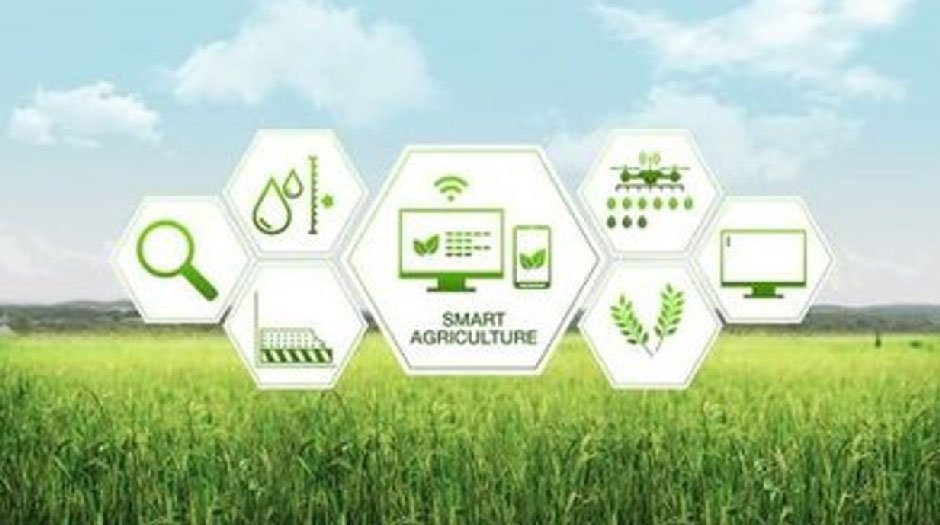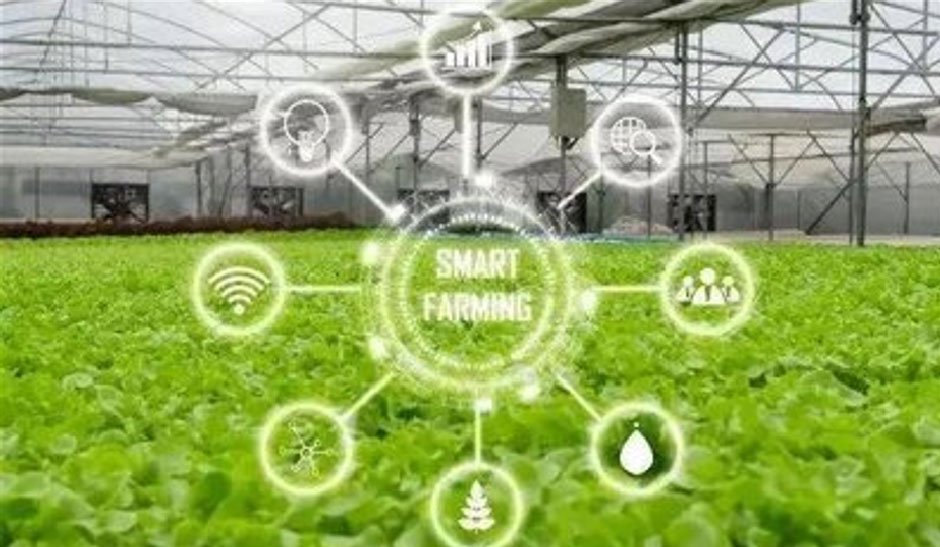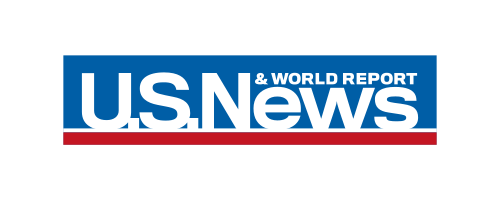Skip to the good bit
ToggleIn today’s era of globalization, agriculture faces many challenges and opportunities. With the growth of population and the increasing demand for agricultural products, improving agricultural production efficiency and ensuring the quality of agricultural products have become vital tasks. As one of the most important crops in the world, the yield and quality of soybeans have a profound impact on global food security, feed supply and industrial raw material demand. Against this background, the emergence of agricultural Internet of Things technology has brought revolutionary changes to soybean production.
Seeding Management
In the traditional soybean sowing process, there are many unavoidable problems. Traditional seeders are often operated based on relatively simple mechanical principles. Due to the limitations of mechanical structure and the influence of human factors during operation, reseeding and missed seeding are common. For example, the seeding device of the seeding machine may be worn out due to long-term use, resulting in uneven seed falling, which in turn causes reseeding or missed seeding. Moreover, it is difficult to achieve an ideal state in terms of grain spacing uniformity. These problems seem small, but they directly affect the emergence quality of soybeans.
Seedling quality is the key starting point for soybean growth. If the sowing is uneven and the distribution of seeds in the soil is unreasonable, the soil nutrients, water and growth space obtained by the seeds will be different during the germination process. For example, in places where the seed spacing is too dense, the seeds will compete with each other for nutrients and space, resulting in growth inhibition; while places where the seeds are missed will cause waste of land resources and affect the overall yield.
However, these problems can be effectively solved through the Internet of Things technology. The application of Internet of Things technology in sowing management is first to realize the real-time collection of sowing information through a series of sensors installed on the seeder. These sensors can accurately sense the fall of each seed. The collected information will be processed quickly, and the processed information will be uploaded to the cloud server or local management system in time. Based on these precise data, the operation of the seeder can be accurately adjusted to ensure that the soybean seeds are reasonably distributed in the field, with uniform spacing and consistent depth. This precise sowing method creates a suitable growth environment for seed germination and growth and development, allowing them to thrive under good conditions.
Growth environment monitoring
The growth and development of soybeans is a complex process, which is affected by a variety of environmental factors. Among them, environmental factors such as temperature, solar radiation, moisture, and soil have a significant impact on its yield. In traditional agricultural production, farmers often monitor these environmental factors based on experience and some simple tools, which has great limitations.

For example, for the judgment of soil moisture, the traditional method may only be to roughly estimate by touching the soil with your hands or observing the surface state of the soil. However, this method is difficult to accurately grasp the moisture content inside the soil, because the moisture content of the soil may vary greatly at different depths. For example, solar radiation is difficult to accurately know its value by naked eye observation, and slight changes in solar radiation intensity may affect the photosynthesis of soybeans, thereby affecting the yield.
The emergence of Io T sensing technology provides a powerful tool for accurately monitoring these environmental factors. By widely distributing various types of sensors in soybean planting areas, all-round and real-time monitoring of these key environmental factors can be achieved. For example, soil moisture sensors can penetrate into different soil depths, accurately measure the moisture content in the soil, and transmit these data to the management system in real time. Temperature sensors can accurately sense changes in air temperature and soil temperature, and can provide timely feedback on both high temperatures during the day and low temperatures at night. Solar radiation sensors can accurately record the value of solar radiation intensity.
The data collected by these sensors help agricultural producers and managers make effective scientific decisions. They can adjust irrigation strategies, fertilization plans, or take corresponding measures to deal with adverse environmental conditions based on these data. For example, if the soil moisture sensor shows that the soil moisture is too low, irrigation can be carried out in time; if the solar radiation intensity is insufficient, supplementary lighting measures can be considered. This decision-making method based on accurate data can greatly improve the specificity and accuracy of soybean planting, thereby laying a solid foundation for improving soybean yield and quality.
Pest and disease monitoring and control
In the process of soybean planting, pests and diseases are a factor that seriously affects yield and quality. Traditional pest and disease monitoring and control methods have many disadvantages. In terms of monitoring, farmers often discover pests and diseases through regular field inspections, which is inefficient and prone to omissions. Because the occurrence of pests and diseases often starts in local areas, if the inspection interval is too long or the inspection is not careful, it is difficult to detect the early signs of pests and diseases in time.

In terms of identifying the types of pests and diseases, farmers mostly rely on their own experience or some simple reference materials, which is not very accurate. Different pests and diseases may have similar symptoms, and it is difficult to accurately judge based on experience alone. Moreover, in terms of prevention and control, the traditional method is usually to spray pesticides over a large area, which not only wastes pesticides but also causes serious pollution to the environment.
The application of plant Internet technology has brought new breakthroughs in the monitoring and prevention of pests and diseases. By deploying Io T devices such as image recognition devices and sensors in the field, the occurrence of pests and diseases in bean crops can be monitored in real time. These image recognition devices can quickly identify the type of disease. For example, when a lesion appears on a soybean leaf, the image recognition device can accurately determine which disease it is by taking an image of the lesion and using a per-trained algorithm model, such as soybean rust and downy mildew.
At the same time, plant Internet technology can also combine meteorological data to predict the trend of pests and diseases. Meteorological conditions have an important impact on the occurrence and spread of pests and diseases. For example, when the temperature and humidity are suitable, some pests and diseases may multiply and spread in large numbers. By analyzing the relationship between meteorological data and historical occurrence data of pests and diseases, the system can warn of the occurrence of pests and diseases in advance and buy time for prevention and control work.
In terms of prevention and control measures, precise spraying can be achieved through remote control of spraying equipment. When the system detects the presence of pests and diseases in a certain area, it will only spray the area in a targeted manner, avoiding the waste and environmental pollution caused by large-scale spraying of pesticides. This precise spraying method can also improve the prevention and control effect because it can ensure that pesticides are accurately sprayed to the parts where pests and diseases occur. In addition, remote control of spraying equipment can also reduce labor costs. Farmers do not need to go to the fields to spray pesticides in person. They can control the work of the spraying equipment through terminal devices such as mobile phones or computers.
Intelligent fertilization and nutrition management
In the growth process of soybeans, fertilization is a key link. Reasonable fertilization can provide soybeans with sufficient nutrition, promote their growth and development, and increase yield and quality. However, traditional fertilization methods have many shortcomings.
Traditional fertilization is often based on experience and fixed fertilizer application amounts, lacking an accurate grasp of soil nutrient conditions and crop fertilizer requirements. For example, farmers may apply fertilizer at a fixed amount per mu without considering the actual nutrient content in the soil and the fertilizer requirements of soybeans at different growth stages. This may lead to excessive or insufficient fertilization. Excessive fertilization will not only cause fertilizer waste and increase production costs, but may also pollute the soil environment and affect the fertility and structure of the soil. Insufficient fertilization will cause soybeans to lack necessary nutrients, affect growth and development, and lead to a decrease in yield.
The plant network system can automatically adjust the amount and time of fertilizer application according to the fertilizer requirements of crops and the nutrient conditions of the soil. This system is achieved by installing nutrient sensors in the soil. These sensors can monitor the content of various nutrient elements in the soil, such as nitrogen, phosphorus, potassium, etc. in real time, and transmit data to the control system. The control system calculates the optimal amount and time of fertilizer application based on the fertilizer requirement model of soybeans at different growth stages and the current nutrient conditions of the soil.
For example, during the seedling stage of soybeans, the demand for nitrogen fertilizer is relatively low. The system will appropriately control the amount of nitrogen fertilizer applied according to the nitrogen fertilizer content in the soil to avoid excessive nitrogen fertilizer from causing damage to the seedlings. During the flowering and podding period of soybeans, the demand for phosphorus and potassium fertilizers increases, and the system will promptly remind or automatically supplement phosphorus and potassium fertilizers. This intelligent fertilization method can improve fertilizer utilization, reduce fertilizer waste, and reduce production costs. At the same time, since the amount and time of fertilizer application are determined according to the actual needs of soybeans and the nutrient status of the soil, it can provide soybeans with a more balanced nutrient supply, which is conducive to improving the yield and quality of soybeans.
The application of agricultural Internet of Things technology not only helps to improve the yield and quality of soybeans, ensure global food security and agricultural product supply, but also conforms to the concept of sustainable development and has far-reaching significance for promoting the modernization and transformation of agriculture.







